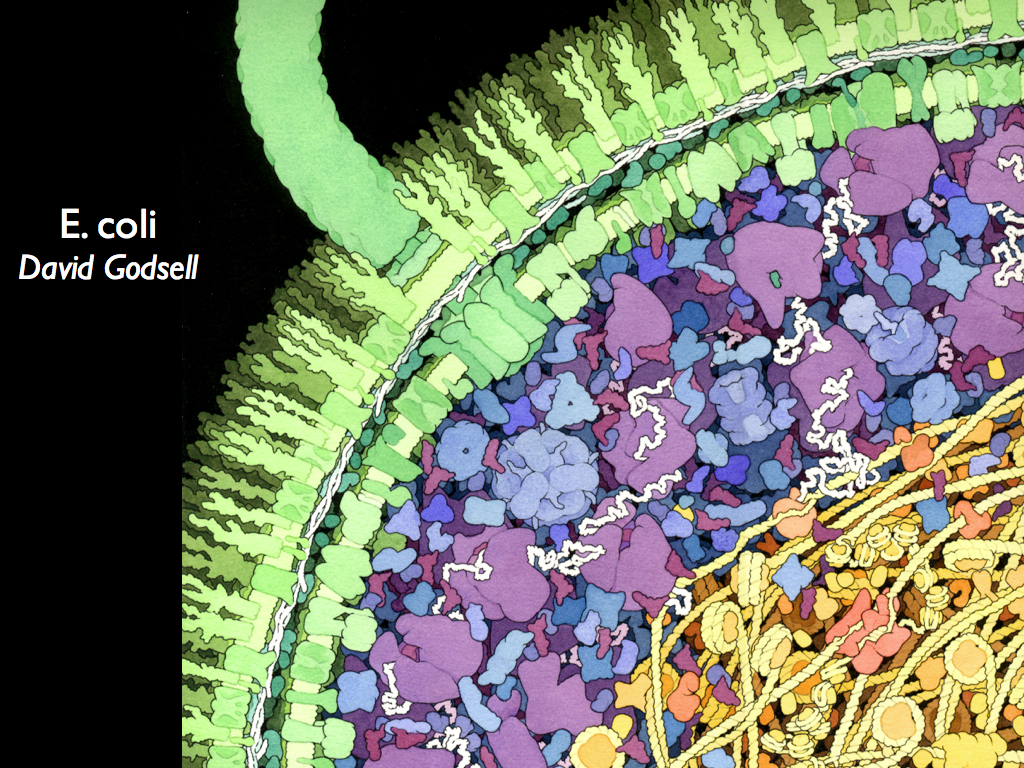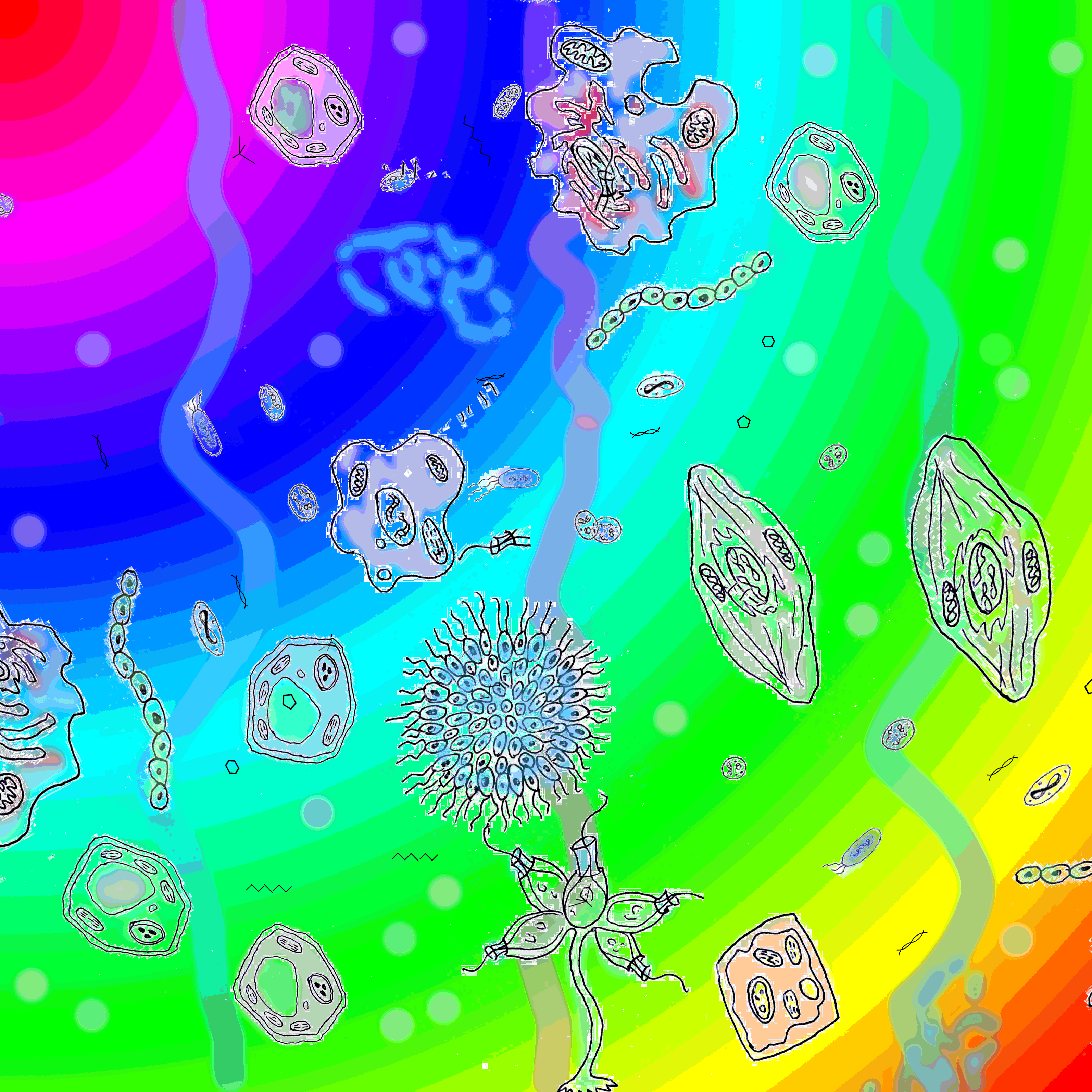An Overview of the Project
In 1944, one of the fathers of quantum physics, Erwin Schrodinger, published “What is Life” - a small book with profound meaning and purpose within Biology (though few biologists today have heard of it). Schrodinger concluded that life was essentially a phenomenon of information processing. In this he predicted that something like DNA had the properties needed to store and transmit the information required to build working cells (this was confirmed empirically in 1953, though the Avery–MacLeod–McCarty experiment had strongly suggested it in 1943). Schrodinger preceded the insights of Claud Shannon, who gave us a quantitative understanding of information processing. In their way, Schrodinger, Shannon and more recently, those who have developed cybernetics, complexity theory and expanded the theories of information and networks have all contributed to the development of a new synthesis of biological understanding that is based on Schrodinger’s original idea. Life is made from chemicals and living processes are chemical reactions, but what makes them life, as opposed to any other complicated chemical system, is the particular organisation that they embody and this organisation is information. It is not conventional to refer to this information-perspective on life as a ‘new-synthesis’, that term being reserved for the theoretical marriage of genetics with Darwinian evolution. But since that ‘new synthesis’ dates back more than 50 years, we might better call it the ‘evolutionary synthesis’ and refer to the Schrodinger-inspired theory as the ‘information-synthesis’. Whatever the labels, it is our purpose to develop and promote this idea to the point where it is an aid to understanding all of biology in a more fundamental and integrated way than ever before.Aims
Our aim is to seek answers to deep
questions such as 'what is life', 'how does it develop such complexity'
and 'can life exist in forms that we do not presently recognise'. We
hope to treat these questions at the deepest possible level and this
demands a rigorous philosophical treatment and a return to fundamental
physics and information theory, as well as making use of the latest
biological research. Though we work in many different fields of study,
we are united by a belief that understanding these phenomena in terms
of information and its processing is likely to build deep insight. This
enquiry breaks down into the following series of questions:
- what is the role of information in causing anything to exist?
- what is 'meaning' (in the sense of being an attribute of information)?
- what precisely and completely is life?
- how does life use information to become what it is?
- how does life organise into its observed complexity and what does this imply?
- and what is the relationship of life to the external physical world?

David Godsell's geometrically accurate painting of the innards of an E. coli (bacterium) cell. Inside we see tremendous complexity among the forms of molecules, many of which are fitted together as 'complexes' just as well as the components of a car engine (e.g. the flagellum motor, in green) and indeed these are little engines. The molecular forms are tightly packed and jostle about, finding one another, sometimes carried from one part to another of the cell by other molecules which read and follow identifying tags that work like postal codes. All the molecules interact with one another in an organised way, despite the apparently chaotic mix; their interactions form networks that carry and store information, they change shape to indicate different states and collectively perform computations: implementing the cellular ‘operating system’ (software) in molecular ‘wetware’ (soggy hardware).
An introduction to the Research Themes
We have divided the overall topic into research themes to reflect the different subject areas in which we work, but the most important message we have is the way these all unite to form a comprehensive framework for thinking about living processes.The first theme: Information Theory should be no surprise as this sets out the mathematical tools used in working quantitatively with information concepts.
The second theme is also quite obvious in the sense that molecular biology can usefully be interpreted as information transmission and processing, especially in relation to DNA and RNA, the genetic code, transcription and inheritance (indeed, recently a group has transcribed a 45000 word book into DNA and back again {Goldman et al 2013}). Less obviously, information is stored in the shape of bio-molecules, the structures they form in the cell and the interaction networks describing their complex chemistry. These are also amenable to description by information theory and introduce complexity theory into the mix.
However, the mathematical treatment of information which started with Claud Shannon is limited to statistical descriptions of information flows and crucially does not deal with semantics or meaning. We have to generalise these terms to encompass concepts applying to non-sentient receivers of information and here the new philosophy of information becomes a major root of understanding. The third theme develops much broader concepts of information to define function and meaningful information in the sense of it having constructive effects in complex systems.
At the same time and rather in parallel, we also recognise the relationship between information statistics and thermodynamics, which in its own right is useful in forming a deeper understanding of the processes of life. The primary link between information statistics and thermodynamics is the confusing and sometimes rather mysterious property called entropy so our fourth theme deals with this and its contribution to understanding why and how life changes the physical world. Entropy is a deceptively deep concept that has been used to explain why time goes in only one direction and how the universe as a whole develops and will eventualy end. It is with entropy that we understand something of what life brings into this cosmic scale of processes.
The generalisation of information enables us to define mutual context: the way one piece of information can influence or unite with another to build a more comlpex system and this way eventually to generate emergent properties, apparently (but not really) out of nothing. This is one of the regular features of living systems which appear as a multiple levels of complexity, like Russian dolls, each outer one created by the inner. Understanding these processes is the topic of the fifth theme - Biocomplexity.
Not only is life structured as a nested hierarchy of informational systems, but collectively these systems form such cybernetic self-reference that they amount to closed systems from the point of view of control. Because of this, they are whole in a very deep sense: one that enables them to make, maintain and reproduce themselves, in a word, autopoeisis. This gives them autonomy and it is that which more than anything else, characterises life as distinct from non-life.
With the preceding themes, we begin to see some general principles for life: what it is, even when we strip away the particular biochemistry that we are familiar with and we see how it may self-assemble from interacting information. This is a core concern for astrobiology: the study of life in a sense more general than that constrained to live on earth. It sheds light on the present mystery of how life began on our planet and equivalently could have developed elsewhere, so our sixth theme is an application of the information-synthesis to the question of the origins of life.
There are two aspects to complexity, the more obvious being the diversity of parts that make up the whole. In the second application of our thinking, we apply ourselves to the building of a fundamental theory of biodiversity: its origins, how to quantify it and what it really means to the functioning of life in general, especially, of course at the ecological level of organisation.
Finally, we try to bring all this together in a self-consistent and singular theory of life based on the information processing interpretation. This is the work of the synthesis theme in which we all take part.
To explore the website, we recommend you spend time in the Themes section where you will find more thorough explanations and more individual material from the various network members. Please also use the library of resources to find further relevant reading.
At this stage, the IFB network is not funded. However we are using it in part to back proposals for funded workshops and meetings (e.g. our particpation in the German sDIV Network on Biodiversity), with applications in preparation for the U.K. Royal Society and the Human Frontiers Science Programme. If you are working in a related or complementary field and would like to join in, please write to as - you will find the address on the contact page.
